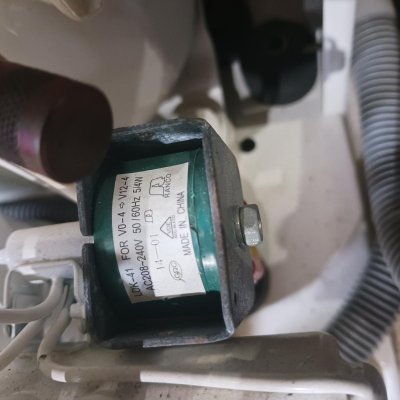Wdeertz
Senior Member
My cruisair was icing up. I discovered that even when the unit was turned off at the controller the compressor was still running. I diagnosed this as a bad logic board which I replaced. The unit is now cooling and properly cycling. Given the upcoming winter months I tried the heat mode but it appears the reversing valve isn’t working as it stays in cool mode despite switching to heat. I tried cycling between cool and heat and tapping the valve to unstick it but this didn’t help. I removed the coil and it says it’s a 208-240v coil. I put a multimeter on the coil wires and with the unit off I was getting 160v and when switched on in cool mode it went to 30v, I then switched to heat mode and it went back to 160v and once the compressor went on it went back to 30v.
It is my understanding that the unit defaults to cool mode so I would expect 0v on the coil when in cool mode and 240v when in heat mode. As I understand it when the coil is energized it creates magnetism and causes the plunger valve to reverse. Can anyone tell me what voltages I should be expecting on this circuit in the various modes?
It is my understanding that the unit defaults to cool mode so I would expect 0v on the coil when in cool mode and 240v when in heat mode. As I understand it when the coil is energized it creates magnetism and causes the plunger valve to reverse. Can anyone tell me what voltages I should be expecting on this circuit in the various modes?


